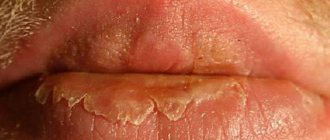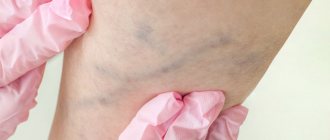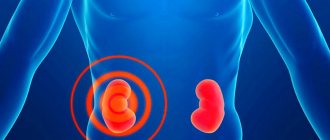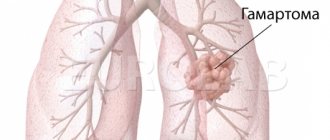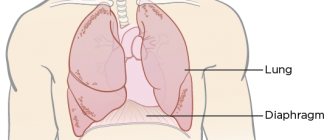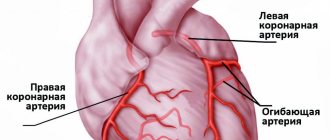Causes of cheilitis
The inflammatory process can begin for multiple reasons. One of the most common of them is mechanical injuries: for example, accidental biting can cause inflammation.
The development of the disease can also be provoked by:
- unfavorable environment (people who spend a lot of time outdoors and are exposed to wind, frost and other weather conditions are more likely to suffer from cheilitis);
- aggressive action of cosmetics or an allergic reaction to some of their components;
- lack of vitamin B2, which is responsible for the division and growth of epithelial cells;
- diseases of the gastrointestinal tract, liver, lack of immunity.
My lip is cracked in the middle: what should I apply?
What to apply if your lip is cracked in the middle:
- Zinc ointment has an analgesic and disinfecting effect, relieves inflammation. From 3 to 5 times a day - and the wound will begin to heal. One “but”, check before using it to see if you have an allergic reaction or suppuration in the wound.
- Solcoseryl requires moisturizing after application. It has an analgesic effect and promotes rapid healing of the crack. Also monitor for any allergic reaction.
- Synthomycin . Quite an effective remedy with an antiseptic and analgesic effect. Due to many contraindications, it is better not to use this remedy without consulting a doctor.
- Bepanten . Recommended also for children, it has an anti-inflammatory effect, regenerates soft tissues.
Smear
Types of the disease, their symptoms
There are a large number of types of disease, each of which has its own symptoms. Cheilitis happens:
- catarrhal, resulting from injury. Its characteristic symptoms are redness, peeling, swelling and soreness of the lips.
- eczematous, developing due to the occurrence of eczematous processes. The reason is an allergy to a certain type of food, cosmetics (lipstick, cream).
- glandular, associated with an abnormality of the salivary glands. It happens that cheilitis on the lips accompanies periodontal disease, lupus, etc. The lower lip often suffers and begins to peel.
- meteorological. It is caused, as the name suggests, by weather conditions (high air humidity, strong wind, decreased or increased temperature, exposure to ultraviolet radiation, etc.).
- exfoliative, characterized by a chronic course. It is divided into two forms - dry (the blood supply to the lips is disrupted and, as a result, dry scales are formed, which can be easily removed, but after a few days they appear again) and exudative (the border swells and becomes inflamed, crusts appear).
- angular, called jam. Due to streptococci, inflammation begins in the corners of the lips. Vitamin deficiency and frequent licking of lips can also provoke it.
- atopic, accompanying atopic dermatitis. The red border of the lips flakes and itches, the lips crack.
- hypovitaminosis, which occurs due to a lack of B vitamins. Dryness and a pronounced burning sensation affect not only the lip area, but also the entire mucous membrane of the mouth, including the tongue. In this case, the mucous membrane turns red, and vertical cracks form in the area of the red border.
Regardless of the type of cheilitis, common symptoms will be:
- peeling of the lips, observed both only near the border and over the entire surface;
- swelling and swelling, burning and itching in the lips, the appearance of cracks and crusts on them.
How to treat a cracked lip in the middle: folk remedies
Cracked lip in the middle:
- You need to lubricate the crack with honey . Its softening and bactericidal effect has a beneficial effect on healing. This method is good if you are not allergic to the product.
- Use sour cream and olive oil , adding a couple of drops. Make a mask from this composition and leave it overnight. You can lubricate your lips with butter, and before going out - with Vaseline. By the way, you can prepare your own lip mask from these ingredients, taking three parts oil to one part Vaseline.
- tea tree ether is quite effective . If you add 2-3 drops to almond or peach oil and apply to the wound, healing occurs within a few days. If not, it means that the inflammatory process is developing, and then medical consultation is necessary.
- Mix vegetable oil with kiwi fruit pulp and apply this mixture to your lip for 20 minutes. Rinse off the mixture and dry your lips, and then moisturize them with a special product. If it doesn’t help, use a compress containing vitamins A and E.
- If a small child, especially an infant, has a cracked lip, the reason is most likely due to the composition of the mother’s milk. Therefore, mother should enrich her diet with vitamins. You can lubricate with cream, the main thing is that they do not contain fragrances or dyes.
- Home doctor - aloe flower is a universal healing remedy, including for lip cracks.
- Another universal remedy - tea rose petals, which are recommended even for infants with stomatitis. Soaked in warm milk for half an hour and ground to a homogeneous consistency, they heal cracks well when applied to the lips.
Petals - Echination tincture , and not necessarily from a pharmacy, but also from our own production. Just fill a third of a liter jar with crushed dry echinacea and add alcohol, vodka, moonshine - any strong composition. Leave it to brew for a couple of weeks and take it to boost your immunity before going to bed.
Cheilitis in children
Depending on the age of the child, he may experience a certain type of cheilitis.
Newborns suffer from a catarrhal disease caused by the prolonged presence of a pacifier or bottle in the mouth. Plus, saliva accumulates on the nipples of the lips, irritating sensitive baby skin.
If the disease is ignored, hoping that it will go away on its own, cheilitis will develop into an exfoliative form, accompanied by the formation of scales, which the child will not be able to remove himself (parents are highly discouraged from interfering in this process, since attempts to tear off the crusts can cause cracks, which will only aggravate the situation ).
Constant sucking of the mother's breast is an equally common cause of the development of the disease: during feeding, cracks form on the nipples, into which bacteria penetrate, which causes cheilitis.
A child’s lip is cracked in the middle: what to do?
- What to do if a child’s lip is cracked in the middle? Among the remedies used to treat cracked lips in children, mothers recommend the same Bepanten , as well as Boroplus in the form of a cream. The only disadvantage of the latter remedy is the strong sandalwood smell, which not all children like.
- The methods described above using honey and Vaseline are also used for children. They can be used to lubricate your child's lips while sleeping.
The child has
Before going outside, you need to apply a special hygiene lipstick for children to your baby’s lips. All products must be tested to ensure there are no allergies to them.
If the crack does not heal for a long time, you need to make sure that the child drinks enough fluids and eats foods containing vitamin A. In addition, it is necessary to control that the air in the room where the child is is not too dry.
Where do the sticky spots in the corners of the mouth come from?
Cracks in the corners of the lips, the so-called jams, are the most disgusting, because they hurt a lot, do not allow you to open your mouth, and do not go away for a long time.
The main reasons for their appearance are the same as for normal dry lips, but there are additional factors.
- Chronic diseases. For example, diabetes or any skin diseases.
- Lack of vitamins A or B2, possibly iron deficiency. But this is a condition that occurs only with an unbalanced diet. Therefore, switch to healthy food and a nutritious diet so as not to suffer from skin problems. To find out if you have enough iron, take a routine blood test.
- Humidity. If the corners of your lips are constantly wet from saliva, an incorrect bite may be to blame. Consult your dentist. It might be possible to fix this.
Symptoms and complaints of perineal varicose veins
In the classic version, there is a triad of symptoms:
- Pelvic pain.
- Varicose veins of the labia and perineum.
- Dysmenorrhea is a cyclical process, when during menstruation severe pain in the lower abdomen, heavy menstrual bleeding, and menstrual irregularities may appear.
- With a long course of the disease, the development of dyspareunia is possible - painful sensations in the lower abdomen that occur during or after sexual intercourse. A peculiarity of this symptom is the persistence of pain for at least 30 minutes and up to a day after sexual intercourse.
Arteriovenous compression
- Aorto-mesenteric compression of the left renal vein
Aorto-mesenteric compression of the left renal vein (aorto-mesenteric “tweezers”, nutcracker syndrome, mesoaortic compression syndrome of the left renal vein) is a situation in which the left renal vein is compressed between the aorta and the superior mesenteric artery. This leads to disturbances in the outflow of blood in the left renal vein, expansion and formation of “reverse” blood flow through the left gonadal vein with the formation of symptoms of varicose veins of the female genital organs.
- May-Turner syndrome
May-Turner syndrome is a situation in which the left common iliac vein is compressed by the right common iliac artery, leading to expansion of the common iliac vein below the site of compression and overflow of the pelvic vessels with venous blood. We also often observe the development of varicose veins - expansion of the left lower limb, the formation of persistent swelling of the soft tissues of the left lower limb and even trophic disorders (pigmentation). Most often, with May-Turner syndrome, varicose veins on the outer labia develop during pregnancy and remain forever after pregnancy (photo).
- Postthrombotic disease
Quite often one can observe the development of pelvic varicose veins in patients who have previously suffered deep vein thrombosis (especially proximal thrombosis) when there is a residual narrowing of the lumen or complete occlusion of the lumen of the common iliac vein. In this case, the outflow of blood from the pelvic organs is sharply hampered and, as a consequence, the expansion of the lumen of blood vessels and the development of pelvic varicose veins.
- Venous dysplasia
This is a malformation of the superficial or deep veins that occurs in the early phases of the formation of the vascular system of the embryo in the period from 4 to 8 weeks of intrauterine development. Venous dysplasia leads to the appearance of varicose veins of the minor lips. The diagnosis of dysplasia can be established provided that other causes of dilation of the genital vessels are excluded. Dysplasias look like dense vascular spots that are difficult to empty when squeezed. They resemble tumor-like formations more than dilated varicose veins.
Cracked lip in the middle: a sign
Signs about what a crack on the lip means developed in ancient times and have survived to this day.
- Is your lip cracked in the middle? A sign of recent passionate kisses . This is explained by the fact that girls have long applied honey or wax coating to their lips to protect them from wind or sunlight. Before the date, this layer was washed off so that the lips were soft and natural. Deprived of their usual protection, and even under the influence of a hot kiss, their lips easily cracked, thereby betraying the secrets of the girl’s heart.
- Evil eye . Everyone has long known that a person who has been “jinxed” becomes vulnerable to negative influences. And all these factors negatively affect health, including skin condition. Therefore, it has become a custom to interpret the appearance of a crack on the lip as one of the signs that a person has been exposed to the evil eye.
- There is another interesting sign that warns you about what needs to be done to prevent your lips from cracking. You just need to kiss the ground at the first spring thunder . The sign says that this action will protect your lips from cracking (and, by the way, from toothache) for a whole year.
- There is also an interpretation of a dream in which you saw a crack in your lip. Such a dream speaks of impending troubles: failures, separations, unnecessary spending.

